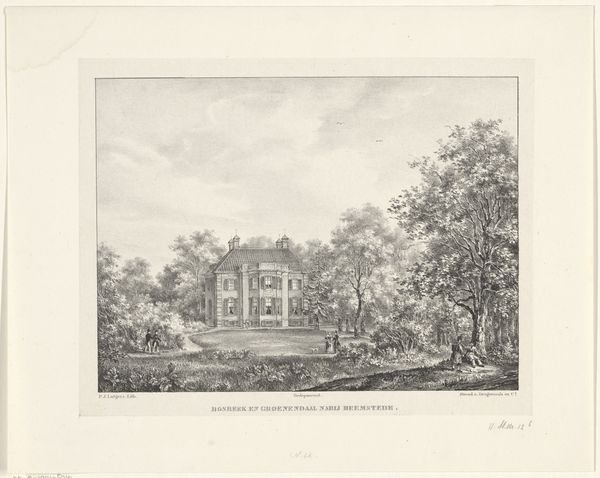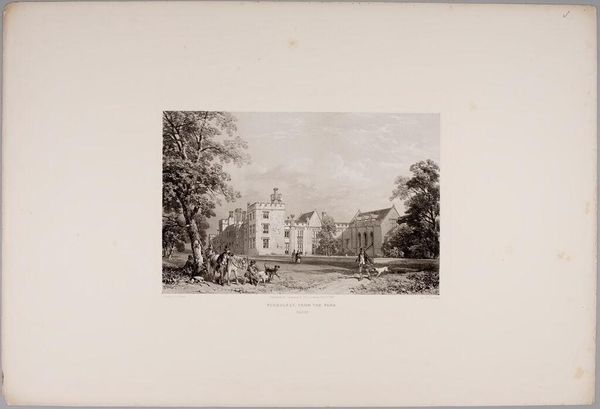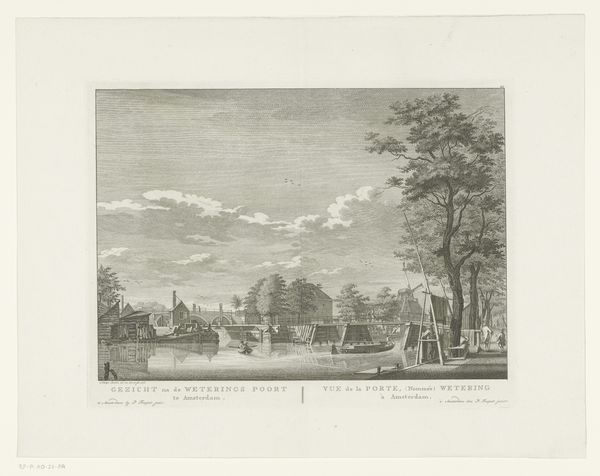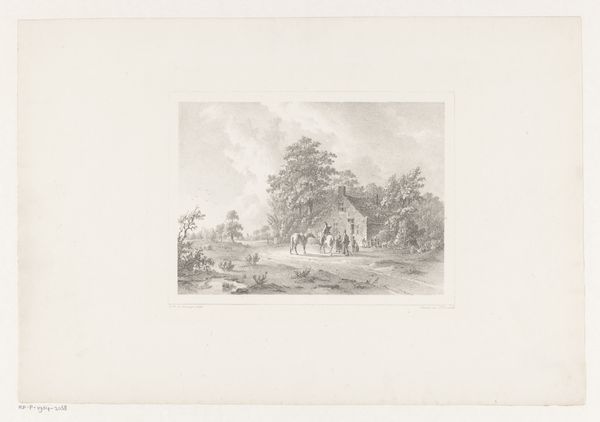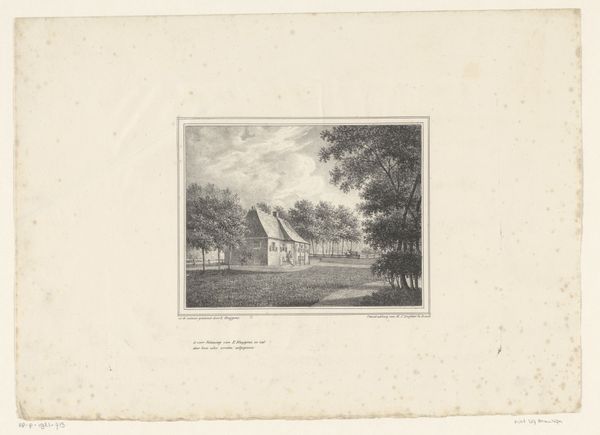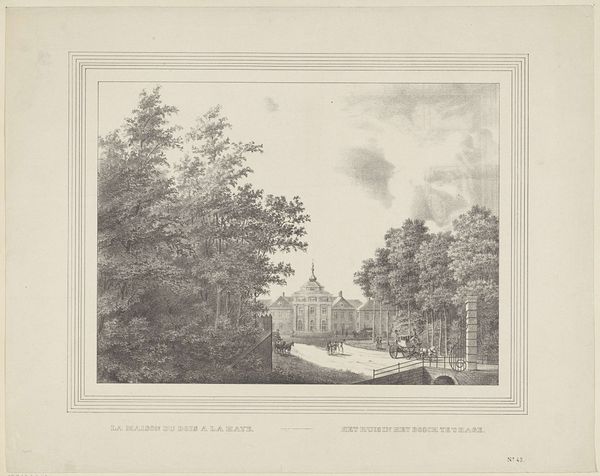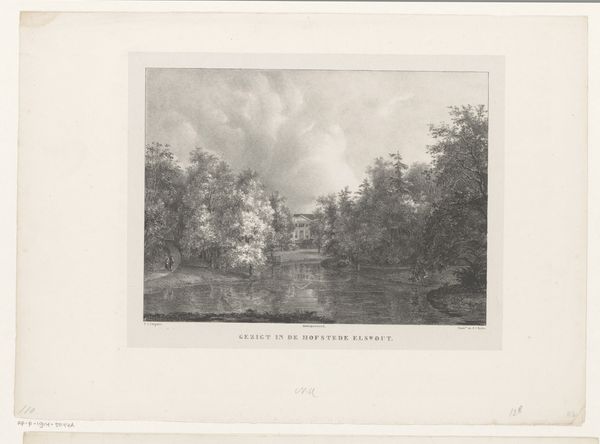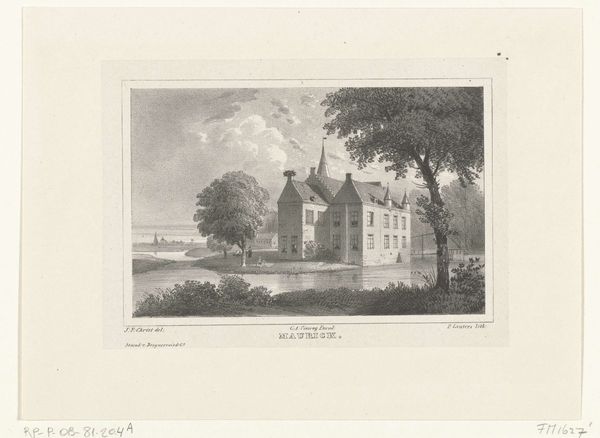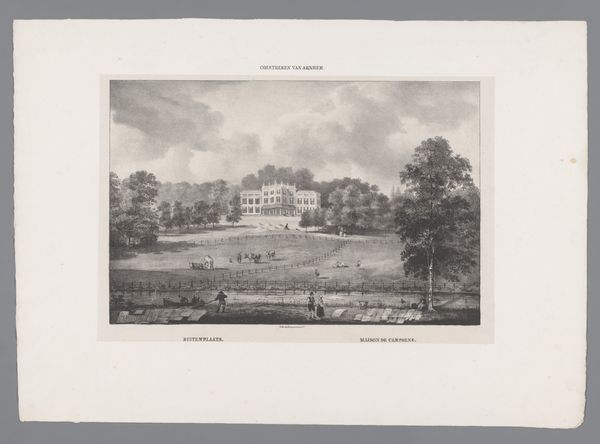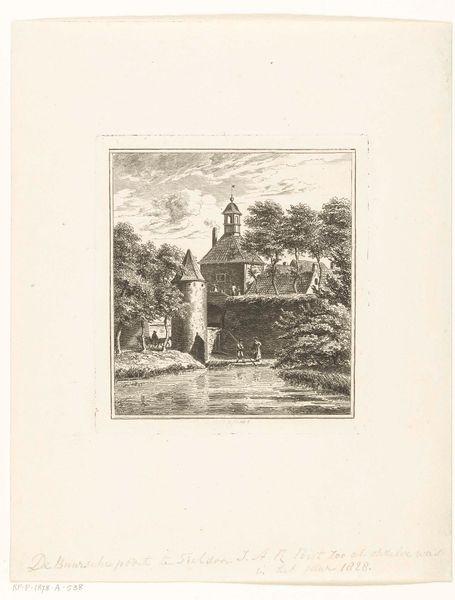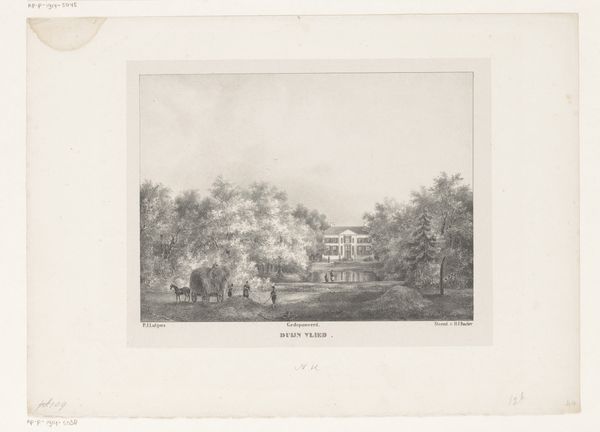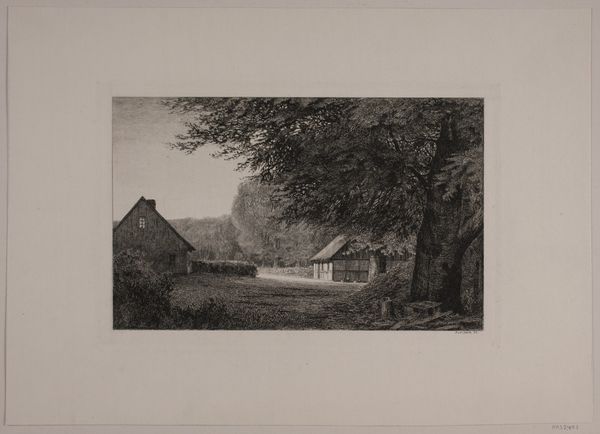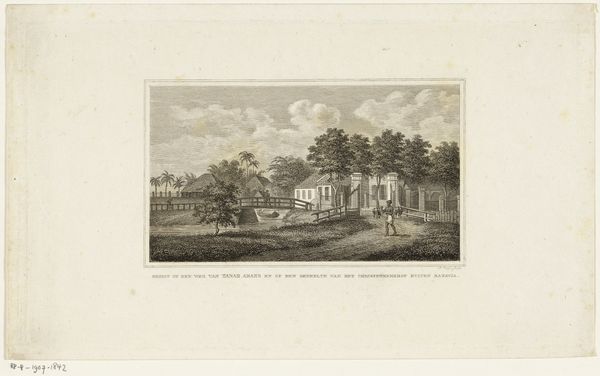
Dimensions: height 229 mm, width 265 mm
Copyright: Rijks Museum: Open Domain
Christiaan Lodewijk van Kesteren made this aquatint titled ‘Watermolen’. The texture of ‘Watermolen’ emerges from the printmaking process, from the grainy quality of the aquatint to the mark-making used to create the image. It looks like the work was made by laying down powdered resin on a copper plate before etching it with acid to create tonal effects. We see a Dutch watermill, a machine central to early industrialization, and a symbol of rural labor. The artist’s approach reflects the transition from manual craft to mechanical production that was transforming society at the time. The printmaking process itself, involving technical skill and labor, mirrors the mill’s operation. It also offers a means of reproducing images on a mass scale, creating an accessible and democratic art form. Ultimately, considering the materials, processes, and social context helps us appreciate the full meaning of ‘Watermolen,’ blurring the lines between fine art and craft.
Comments
No comments
Be the first to comment and join the conversation on the ultimate creative platform.
